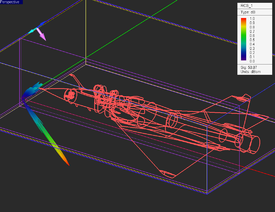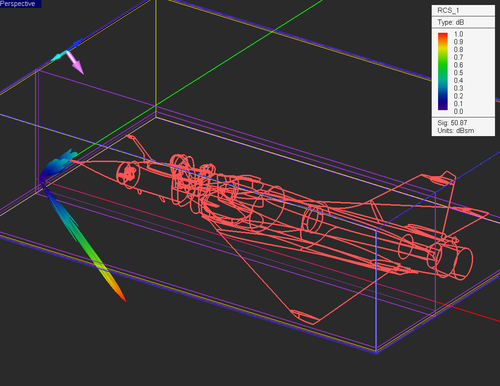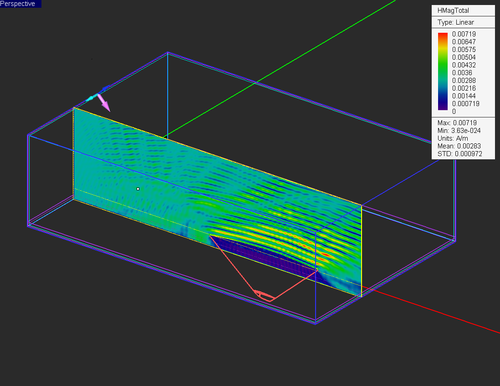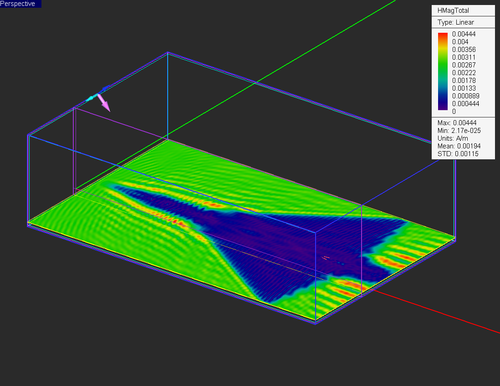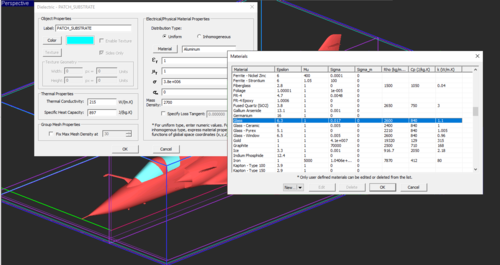Difference between revisions of "Application Article: Modeling Large Structures in EM.Tempo"
From Emagtech Wiki
(→Computational Environment) |
|||
| Line 11: | Line 11: | ||
== Computational Environment == | == Computational Environment == | ||
| − | The Mirage III has approximate dimensions (length,wingspan,height) of 15m x 8m x 4.5m. | + | The Mirage III has approximate dimensions (length,wingspan,height) of 15m x 8m x 4.5m. Or, measured in terms of freespace wavelength at 850 MHz, 42.5 lambda x 22.66 lambda x 12.75 lambda. Thus, for the purposes of [[EM.Tempo]], we need to solve a region of about 12,279 cubic wavelengths. If we mesh each dimension of the cube at about 15 cells per freespace wavelength, we |
| − | + | ||
| − | + | ||
| − | + | ||
== CAD Model == | == CAD Model == | ||
Revision as of 19:58, 7 October 2016
Introduction
In this article, we compute the bistatic radar cross-section (RCS) of a Dassault Mirage III type fighter aircraft at 850 MHz with EM.Tempo. At 850 MHz, considerable computational resources are required to compute a full-wave result with EM.Tempo's FDTD solver.
Computational Environment
The Mirage III has approximate dimensions (length,wingspan,height) of 15m x 8m x 4.5m. Or, measured in terms of freespace wavelength at 850 MHz, 42.5 lambda x 22.66 lambda x 12.75 lambda. Thus, for the purposes of EM.Tempo, we need to solve a region of about 12,279 cubic wavelengths. If we mesh each dimension of the cube at about 15 cells per freespace wavelength, we
CAD Model
Project Setup
Results
